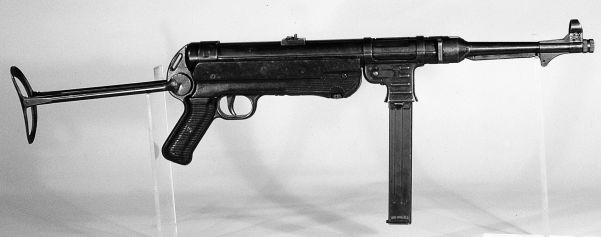
The MP 38 was a technical and tactical success, but was also expensive to manufacture in terms of materials and time. The MP 38 was therefore re-designed as the Maschinenpistole 40 that was generally similar to the MP 38 but far easier to manufacture, as machining was reduced to a minimum and the use of welding and pressed components was maximized. As well as speeding production, these changes also made it possible for the MP 40 to be made by a larger number of companies drawing on the efforts of a pool of subcontractors delivering subassemblies. The MP 40 thus inaugurated the era of the swift and cheap manufacture of basic small arms, and was one of the most important submachine guns of World War II.
Operational use of the weapon on the Eastern Front revealed that the MP 40 was not without its limitations, however, most notably by comparison with the Soviets’ PPSh submachine gun that could be fitted with a 71-round drum magazine. This led to the creation of the MP 40/II that introduced a wider magazine housing to carry a side-by-side pair of MP 40 magazines: when the first magazine had been emptied, the complete assembly could be pushed over to bring the second magazine into position. The MP 40/II was delivered from 1943, but was not notably effective and was therefore manufactured only in modest numbers.
Specifications
- Type
- submachine gun
- Calibre
- 9mm (0.354in) Parabellum
- Length
- 0.833m (32.8in), butt extended
- Length of Barrel
- 0.252m (9.9in)
- Weight
- 4.027kg (8.88lb)
- Muzzle Velocity
- 380m (1247ft) per second
- Feed
- 32-round detachable box magazine (500rpm)
